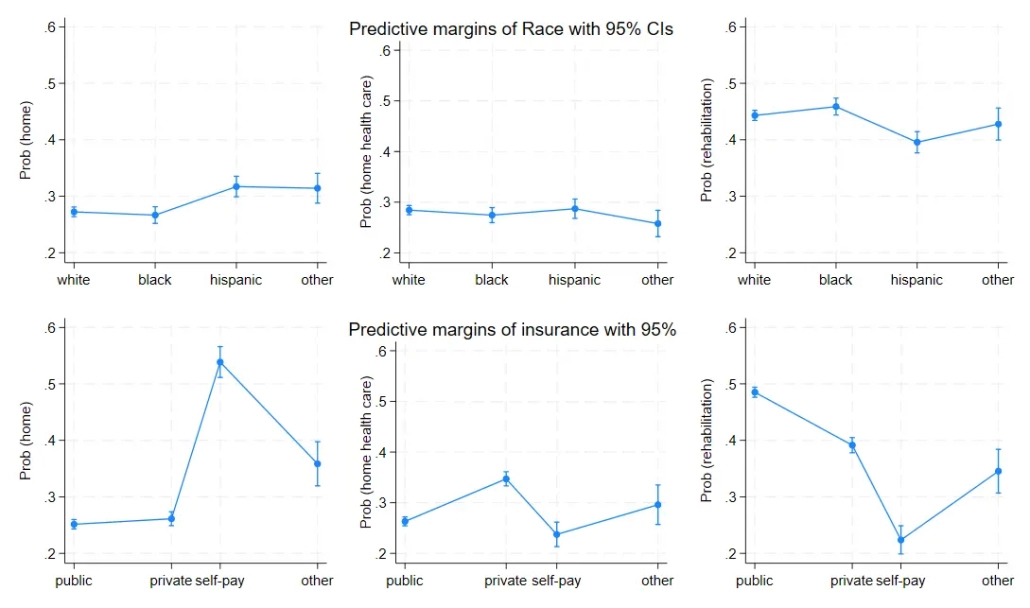The Impact of Racial and Socioeconomic Disparities in Discharge Disposition after Necrotizing Soft Tissue Infections
Author(s):
Manuel Castillo-Angeles ; Barbara Okafor; Rebecca Wiener; Saba Ilkhani; Christine Wu; Stephanie Nitzschke; Reza Askari MD
Background:
After an extended hospitalization, rehabilitation is an essencial component of recovery for Necrotizing Soft Tissue Infections (NSTIs) survivors. It is well established that underlying racial disparities and low socioeconomic status are factors that complicate access to and quality of care. The aim of this study was to determine if disparities were associated with discharge disposition in the NSTI population.
Hypothesis:
We hypothesize that disparities impact the access to rehabilitation in this population.
Methods:
We queried the Nationwide Inpatient Sample (2015-2018) to identify patients with a primary diagnosis of NSTIs. Main exposures were race (White, Black, Hispanic, Other) and insurance status (Private, public, self-pay/uninsured, other). The main outcome was discharge disposition categorized into home without support, home health care, and rehabilitation (included Skilled Nursing Facility, Intermediate Care Facility, inpatient rehabilitation facility). Multinomial logistic regression was used to identify the association between socio-demographic factors and our main outcome.
Results:
We included a weighted total of 100,560 NSTI patients. 43,850 (43.61%) were discharged to rehabilitation. In adjusted analysis, Hispanic patients had lower probability of discharge to home health care (Relative Risk Ratio [RRR] 0.84, 95% Confidence Interval [CI] 0.74 – 0.95) or rehabilitation (RRR 0.72, 95%CI 0.63–0.81) vs. being discharged home compared with White patients. Compared with private insurance, uninsured patients had lower probability of discharge to rehabilitation (RRR 0.22, 95%CI 0.18–0.27), but having public insurance was associated with an increased probability of discharge to rehabilitation (RRR 1.36, 95%CI 1.24–1.50) vs. being discharged home. The figure shows predicted probabilities by race and insurance status for each category of discharge disposition.

Conclusions:
Racial and socio-economic disparities prevail among NSTI survivors and their discharge destination. Further studies should focus on identifying the sources of these disparities and implementing targeted interventions to ensure equality in the access to better care in this population.

